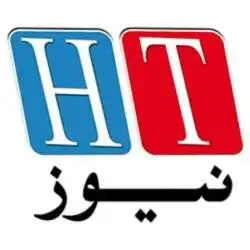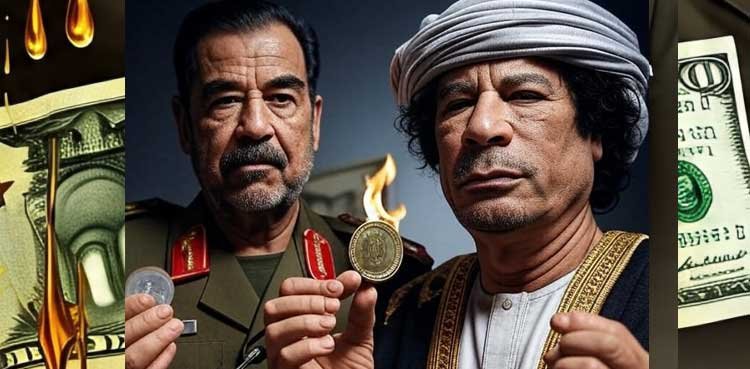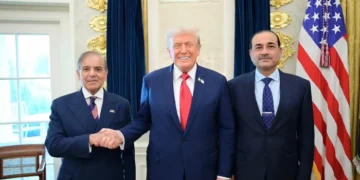The global dominance of the US dollar as the world’s reserve currency has been a cornerstone of American economic power since the post-World War II era. However, this hegemony has not gone unchallenged. Two prominent leaders, Muammar Gaddafi of Libya and Saddam Hussein of Iraq, posed significant threats to this financial order by attempting to shift their nations’ oil transactions away from the dollar. Their actions, coupled with the subsequent Western interventions that led to their downfall, suggest a pattern: challenging the dollar’s supremacy comes with severe consequences.
Saddam Hussein’s Euro Experiment
In late 2000, Saddam Hussein, Iraq’s authoritarian leader, made a bold move that reverberated through global financial markets. He announced that Iraq would no longer accept US dollars for its oil exports, demanding euros instead. This decision was significant because oil, a critical global commodity, is predominantly priced and traded in dollars, reinforcing the currency’s role as the world’s reserve currency. Saddam’s shift to the euro was not merely symbolic; it was a direct challenge to the petrodollar system, which ensures that oil-producing nations recycle their revenues through dollar-based transactions, bolstering US economic influence.
The Guardian reported in 2003 that Iraq’s switch to the euro had already cost the US economy millions, as the dollar weakened against the euro and global demand for dollars softened. By February 2003, Iraq had accumulated over €20 billion in its UN-controlled oil-for-food account, all denominated in euros. This move threatened to inspire other oil-producing nations, particularly those in OPEC, to consider similar shifts, which could erode the dollar’s dominance. The article noted fears among currency traders that a broader adoption of the euro for oil transactions could trigger a sell-off of dollar reserves, potentially crashing the US currency and sparking an economic crisis.
Saddam’s defiance came at a time of heightened tensions with the US, which had imposed crippling sanctions on Iraq since the 1991 Gulf War. The Bush administration, already framing Saddam as a threat due to alleged weapons of mass destruction (WMDs), seized the opportunity to justify military intervention. The 2003 invasion of Iraq, led by the US and its allies, toppled Saddam’s regime within weeks. Notably, one of the first actions of the US-installed interim government was to reverse Iraq’s oil pricing back to dollars, ensuring the petrodollar system remained intact. While WMDs were never found, the restoration of dollar-based oil trade suggests that protecting US financial interests was a key, if unspoken, objective of the invasion.
Gaddafi’s Gold-Backed Dinar Ambition
Similarly, Muammar Gaddafi, Libya’s leader from 1969 to 2011, posed a threat to Western financial dominance through his vision for a pan-African currency. According to an article by Ellen Brown on IAI TV, Gaddafi sought to establish an African central bank with a gold-backed currency, the gold dinar, to replace the US dollar and the French CFA franc in African trade. This currency would have allowed African nations to break free from the economic constraints imposed by Western-controlled financial systems, including the International Monetary Fund (IMF) and the French treasury, which maintains significant control over the CFA franc.
Gaddafi’s plan was not merely theoretical. Libya, under his rule, had amassed significant gold reserves—approximately 143 tons, according to a 2011 email from Sidney Blumenthal to Hillary Clinton, later revealed through WikiLeaks. This gold could have provided the backing for a new currency, challenging the dollar’s role in African oil and commodity transactions. Brown argues that NATO’s 2011 intervention in Libya, which led to Gaddafi’s brutal assassination, was motivated by the need to prevent this currency from materializing. The intervention, ostensibly launched to protect civilians under UN Resolution 1973, coincided with Gaddafi’s efforts to promote the gold dinar, suggesting that economic motives played a significant role.
Before NATO’s intervention, Libya was Africa’s wealthiest nation, with free education, healthcare, and a state-owned bank that provided interest-free loans. Gaddafi’s Great Man-Made River project supplied water to arid regions, and he aimed to replicate this model across Africa, further reducing dependency on Western aid. However, NATO’s bombing campaign destroyed much of this infrastructure, including the irrigation system, plunging Libya into chaos. The rapid dismantling of Gaddafi’s regime and the subsequent fragmentation of Libya into warring factions ensured that the gold dinar never materialized, preserving the dollar’s dominance in African trade.
The Broader Geopolitical Context
The cases of Saddam and Gaddafi fit into a broader pattern of Western interventions targeting leaders who challenge US economic interests. The petrodollar system, established in the 1970s through agreements between the US and Saudi Arabia, ensures that oil revenues are reinvested in dollar-denominated assets, such as US Treasury bonds, sustaining demand for the dollar. Any move to trade oil in alternative currencies threatens this arrangement, as it could reduce global demand for dollars, weaken the US economy, and diminish America’s ability to finance its deficits through foreign capital.
Both leaders’ actions were perceived as existential threats to this system. Saddam’s euro switch was a direct affront to the petrodollar, while Gaddafi’s gold dinar aimed to create a regional alternative that could bypass Western financial institutions entirely. Their defiance was compounded by their geopolitical stances: Saddam’s hostility toward US allies like Israel and Saudi Arabia, and Gaddafi’s support for anti-Western movements, including the Palestine Liberation Organization and the Irish Republican Army, made them convenient targets for regime change.
Critics of the dollar-hegemony thesis argue that humanitarian concerns and regional stability were the primary drivers of intervention. In Iraq, the US cited Saddam’s alleged WMDs and links to terrorism, while in Libya, NATO emphasized Gaddafi’s violent suppression of Arab Spring protests. However, the lack of WMDs in Iraq and the chaotic aftermath of Libya’s intervention—marked by a humanitarian crisis and the rise of extremist groups—undermine these justifications. The swift restoration of dollar-based oil trade in Iraq and the prevention of Gaddafi’s currency plans suggest that economic motives were at least as significant as humanitarian ones.
The downfall of Saddam Hussein and Muammar Gaddafi illustrates the high stakes of challenging the US dollar’s global hegemony. Saddam’s attempt to price Iraq’s oil in euros and Gaddafi’s ambition for a gold-backed African currency threatened to destabilize the petrodollar system, which underpins US economic power. The US-led invasion of Iraq in 2003 and NATO’s intervention in Libya in 2011, both resulting in the leaders’ deaths, served to neutralize these threats and preserve the dollar’s dominance. While humanitarian and strategic rationales were publicly emphasized, the economic outcomes—reversion to dollar-based oil trade in Iraq and the collapse of Gaddafi’s currency plans—point to a deeper motive: protecting the financial order that sustains Western dominance. As global powers like China and Russia increasingly push for de-dollarization, the fates of Saddam and Gaddafi serve as a stark reminder of the lengths to which the US and its allies will go to maintain their economic supremacy.
References
- Ellen Brown, “Why they killed Gaddafi,” IAI TV, February 19, 2021.
- “Iraq’s switch to euro costs US millions,” The Guardian, February 16, 2003.
Also Read: Iraq lesson for Iran-Israel war and US
Disclaimer: The views expressed here are solely the author’s and do not necessarily reflect the opinions and beliefs of ARYNews or its management.












